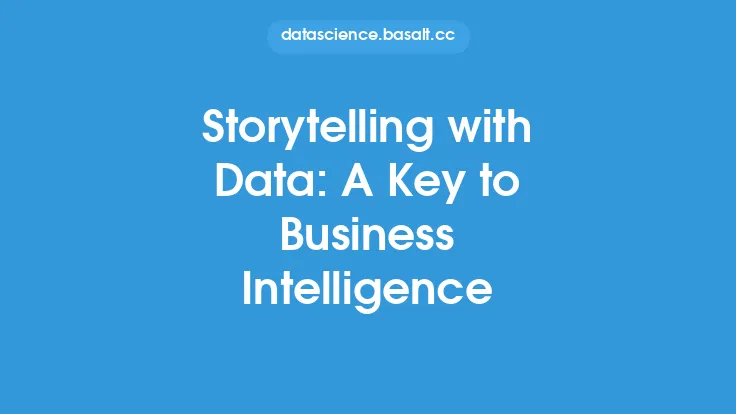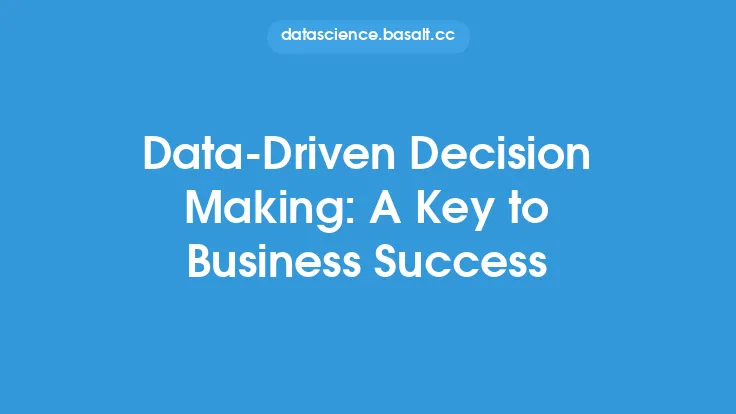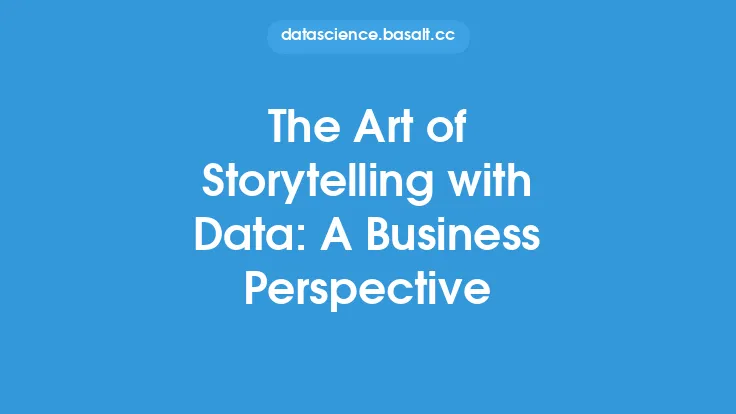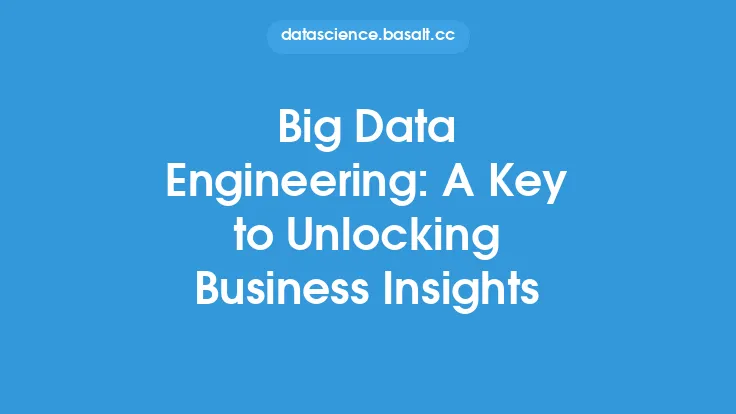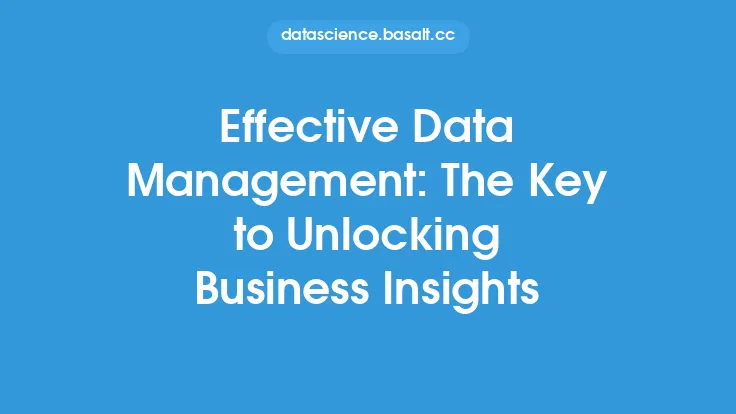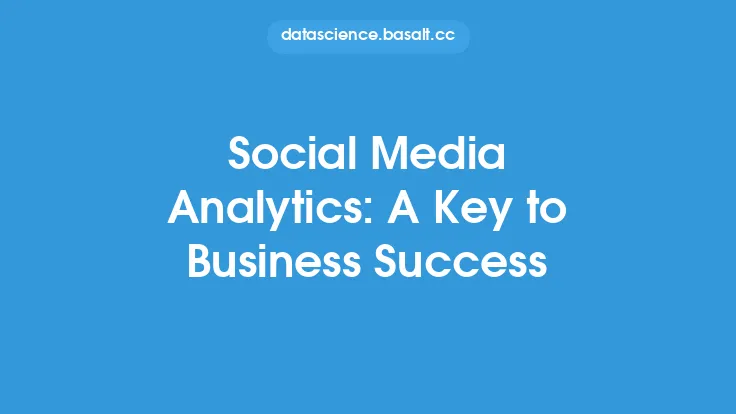In today's fast-paced business landscape, organizations are constantly seeking ways to gain a competitive edge and make informed decisions. One effective approach to achieving this is by leveraging the power of business storytelling with data. This involves using data to craft compelling narratives that convey insights, trends, and patterns in a way that resonates with stakeholders, including executives, customers, and employees. By combining the art of storytelling with the science of data analysis, businesses can unlock new opportunities, drive growth, and foster a culture of data-driven decision-making.
Introduction to Business Storytelling with Data
Business storytelling with data is a discipline that combines data analysis, visualization, and narrative techniques to communicate complex information in a clear and concise manner. It involves using data to identify key trends, patterns, and insights, and then presenting this information in a way that tells a story. This story can be used to inform strategic decisions, drive business outcomes, and engage stakeholders. By using data to tell a story, businesses can create a narrative that is both informative and compelling, making it easier to communicate complex ideas and drive action.
The Benefits of Business Storytelling with Data
The benefits of business storytelling with data are numerous. Firstly, it enables organizations to make data-driven decisions, rather than relying on intuition or anecdotal evidence. By using data to inform decisions, businesses can reduce the risk of errors, improve outcomes, and drive growth. Secondly, business storytelling with data helps to engage stakeholders, including employees, customers, and executives. By presenting complex information in a clear and concise manner, businesses can create a shared understanding of key issues and opportunities, and drive collective action. Finally, business storytelling with data can help to foster a culture of transparency and accountability, as it provides a clear and objective view of business performance.
The Process of Business Storytelling with Data
The process of business storytelling with data involves several key steps. Firstly, it requires the identification of key business questions or opportunities. This involves working with stakeholders to understand their needs and priorities, and identifying areas where data can be used to drive insights and action. Secondly, it involves the collection and analysis of relevant data. This can include internal data sources, such as customer relationship management (CRM) systems, enterprise resource planning (ERP) systems, and financial systems, as well as external data sources, such as social media, market research, and customer feedback. Thirdly, it involves the use of data visualization and narrative techniques to communicate key insights and trends. This can include the use of charts, graphs, and other visualizations, as well as the creation of written narratives and presentations.
Data Visualization Techniques for Business Storytelling
Data visualization is a critical component of business storytelling with data. It involves the use of visualizations, such as charts, graphs, and maps, to communicate complex information in a clear and concise manner. There are several key data visualization techniques that can be used for business storytelling, including:
- Scatter plots: These are used to show the relationship between two variables, such as sales and marketing spend.
- Bar charts: These are used to compare the values of different categories, such as sales by region or product.
- Line charts: These are used to show trends over time, such as sales growth or customer acquisition.
- Heat maps: These are used to show the relationship between two variables, such as customer behavior and demographic characteristics.
- Interactive visualizations: These are used to enable stakeholders to explore data in more detail, such as through the use of filters, drill-downs, and hover-over text.
Narrative Techniques for Business Storytelling
Narrative techniques are also critical for business storytelling with data. These involve the use of storytelling principles, such as character, plot, and setting, to create a compelling narrative that engages stakeholders and drives action. There are several key narrative techniques that can be used for business storytelling, including:
- The hero's journey: This involves creating a narrative that follows a hero (such as a customer or employee) on a journey, and using data to illustrate key challenges and successes.
- The problem-solution: This involves creating a narrative that identifies a key problem or opportunity, and using data to illustrate the solution.
- The before-and-after: This involves creating a narrative that compares a before-and-after scenario, such as the impact of a new marketing campaign or product launch.
- The story behind the numbers: This involves creating a narrative that provides context and insight into key data points, such as sales growth or customer acquisition.
Best Practices for Business Storytelling with Data
There are several best practices that can be used to ensure effective business storytelling with data. Firstly, it is essential to keep it simple: avoid using complex language or technical jargon that may confuse stakeholders. Secondly, it is essential to focus on insights: use data to identify key trends, patterns, and insights, and present these in a clear and concise manner. Thirdly, it is essential to use visualization: use data visualization techniques to communicate complex information in a clear and concise manner. Finally, it is essential to tell a story: use narrative techniques to create a compelling narrative that engages stakeholders and drives action.
Common Challenges and Pitfalls
There are several common challenges and pitfalls that can arise when using business storytelling with data. Firstly, data quality issues: poor data quality can lead to inaccurate insights and conclusions. Secondly, lack of context: failing to provide context and insight into key data points can lead to confusion and misinterpretation. Thirdly, information overload: presenting too much data or information can lead to confusion and overwhelm. Finally, lack of engagement: failing to engage stakeholders through compelling narratives and visualizations can lead to disinterest and inaction.
Conclusion
Business storytelling with data is a powerful approach to driving business success. By combining the art of storytelling with the science of data analysis, organizations can create compelling narratives that convey insights, trends, and patterns in a way that resonates with stakeholders. By following best practices, such as keeping it simple, focusing on insights, using visualization, and telling a story, businesses can unlock new opportunities, drive growth, and foster a culture of data-driven decision-making. Whether you are a business leader, analyst, or communicator, business storytelling with data is an essential skill that can help you to achieve your goals and drive success.
